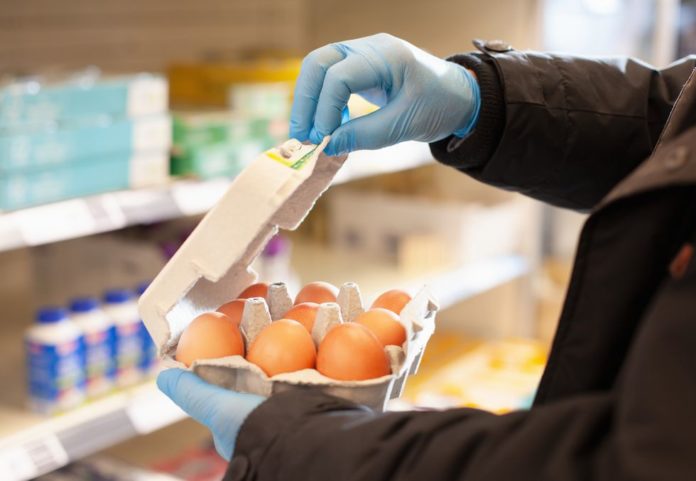There’s a lot of anxiety about grocery shopping these days, and one very visible manifestation of it is the number of people in the aisles wearing gloves. Rubber gloves, dishwashing gloves, regular winter gloves—“I actually witnessed people earlier this week wearing plastic bags on their hands,” says microbiologist Kelly Reynolds, Ph.D., director of the environment, exposure science and risk assessment center at the University of Arizona.
Does wearing gloves make grocery shopping safer? First of all, grocery shopping, if you observe the current novel coronavirus safety recommendations, isn’t as risky as some parts of the internet have made it out to be (get point-by-point clarity on that here).
Second, and more importantly, “it could be causing a lot more harm than good,” explains Reynolds. There are a number of issues:
Gloves are like hands when it comes to spreading viruses—maybe even worse.
This novel coronavirus doesn’t enter the body through your hands, so you don’t need any kind of barrier there. If you touch a contaminated surface with gloves, and touch something else, you’re as likely to spread it as you are if you touch things with your bare hands. Maybe even more likely: “The adhesive properties of viruses differ among viruses; it’s possible the coronavirus could adhere to the latex gloves better than it could adhere to your own skin,” says Reynolds. And hands can be effectively washed and used again right away.
Gloves can give you a false sense of security.
And it’s easy to let your guard down on hand washing when you use gloves, Reynolds says. Plus, wearing them from one errand to another just spreads germs and the novel coronavirus to all those places. (Whereas bare hands would get a squirt of hand sanitizer in between, or a stop at a sink for a good, old-fashioned soap and water wash.)
Very few people take gloves off correctly.
And when you don’t take gloves off properly, you just get everything that was all over the gloves all over yourself and everything else. “Taking gloves off right isn’t a trivial thing,” Reynolds says. “We’ve done studies observing healthcare workers and how they remove the gloves, and about 30% do it wrong—and they’ve been trained.”
How to remove rubber gloves right: In a nutshell, you want to pinch one glove near the wrist and pull it over your hand so it ends up inside out. Then hold that in your gloved hand and carefully slip the fingers of your bare hand into the top of the other glove, let it turn inside out and cover the balled-up other glove. Better yet, check out this step-by-step CDC infographic. Dispose of them—“if you’re not disposing of them properly, you’re just potentially contaminating more surfaces and putting yourself at a much higher risk,” Reynolds says. Don’t skip hand washing after you take them off, even if you remove them right.
So why is it standard procedure for healthcare workers to wear gloves, but not the average person?
Healthcare workers wear gloves for short periods of time while they’re working directly with patients. If you’re one of them, Reynolds explains, “when you have gloves on, it’s for patient service; you’re not walking around the room with the gloves on touching everything. After serving the patient, you leave the gloves in the room, wash your hands, and leave the room to serve the next patient without dragging those germs with you.” It’s a completely different activity than if you’re just going to the grocery store. So for trips to the supermarket it’s the same refrain: Go (ungloved), get what you need, and wash your hands.
From: Men's Health US
Marty Munson Marty Munson, currently the health director of Men's Health, previously served as deputy editor at Dr Oz The Good Life and director of digital content at Shape.







